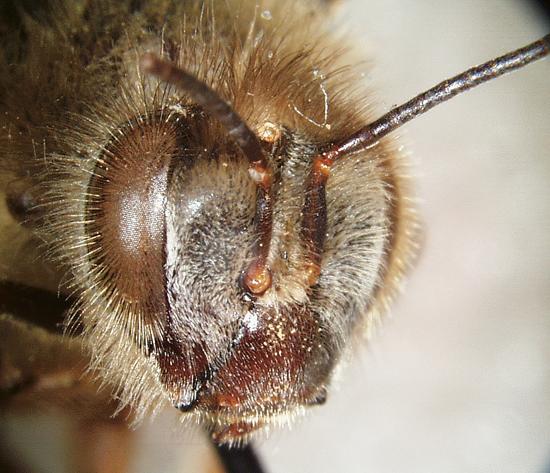A solitary bee, such as a leafcutter bee, mason bee, or alkali bee, begins life as a larva eating a mass of pollen provided by the mother, who the bee will never meet. The larva is not completely alone; he or she shares a nest (hollow twig or soil tunnel) with developing brothers and sisters. They each develop in separate compartments within the nest that the mother partitioned off using leaves or mud. There may be many nests aggregated in one area, a feature that can be exploited to manage these bees as pollinators. After consuming the larva’s share of pollen, the developing bee will enter diapause, passing through the rest of summer, fall, and winter as a prepupa in a state of suspended animation, and complete the pupal development rapidly the following spring. In some cases, the bee may complete development to the adult stage the same year. In either case, after eclosing as an adult, the bee mates right away, ideally with individuals from a different nest. The male dies soon after mating, and the female then does the environment an invaluable service of collecting pollen from the flowers that are blooming around her. She uses the pollen to provision her own nest as the mother of the next generation. She has no help from other bees, and will die before her offspring complete their development the next year. These pollinating bees should be celebrated upon their emergence every spring or summer; the rest of the year they are dormant and quiet to the world.
A female bumble bee spends all or part of her life in company of her mother and sisters. A mated female bumble bee lays eggs on pollen but does not abandon her offspring. She stays put on the nest, caring for her offspring. She incubates them, defends them from predators, collects pollen and nectar for them, and secretes wax to construct and enlarge the nest. When daughters complete development and are adults, the colony becomes social: mother and daughters interact on the nest; the daughters cooperate in brood care, nest provisioning, and defense; and there is reproductive division of labor—the mother lays eggs, and at least for a while, the workers do not. Later in the season as the colony grows, the emerging daughters seem to act like rebellious human teenagers, and begin to challenge the mother’s role as egg-layer. They may start laying their own unfertilized, male-destined eggs and compete with their mother. Eventually, the mother loses reproductive control of the nest and dies. The large daughters produced last in the colony life cycle fly off, mate, and spend the winter underground. In spring they emerge from the ground to begin a nest, only to experience the same rebellion from their own daughters in a few short months.

A honey bee colony shows no remnants of its solitary origins. No individual in the nest can live on its own for an extended time. They are all dependent on each other for survival and reproduction: the queen cannot feed herself or find her own nest, and the daughters can never fly off and mate. The individuals have distinctive and important roles in the nest, but they are nothing without each other. The colony is the organism, a super-organism that contains thousands of organisms within it, and each organism contains organelles made up of organic materials, which can be reduced ad infinitum to smaller and smaller units. When a beekeeper maintains thousands of honey bee colonies for pollination, the super-organisms interact as populations. Each level of organization is dependent on its interaction with the environment for survival; that environment ranges from the internal physiology and nutrition of one individual to climatic patterns of the globe.
Bees, whether solitary or social, are great portals to the environment. Humans who have become disconnected from nature could readily find their bearings by paying attention to bees and the flowers they feed on. The seasonal cycle of a solitary or social bee can be followed with minimal effort, resulting in heightened appreciation and respect for nature and the environment from a bee’s perspective. When you view the world through the multi-faceted eyes of a bee (Figure 3.11), you can never go back; it is a marvelous place.
